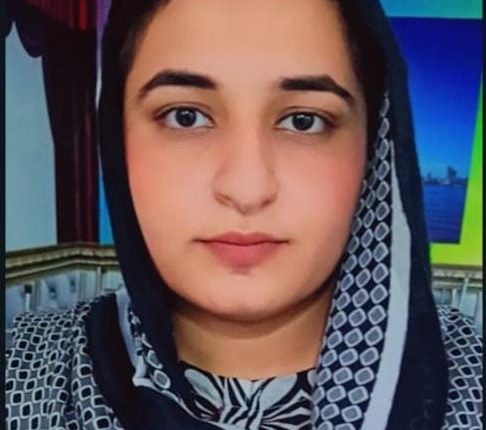By ZAINAB SALEEM
When the British Indian Empire was partitioned in 1947, Jammu & Kashmir stood at a crucial juncture. It was one of the largest princely states to decide what political direction it will take. Under the Dogra dynasty since 1846, it was ruled by Maharaja Hari Singh over a Muslim population in a system which gave little room for political participation or social inclusion. The daily life of many communities, especially in areas like Poonch and Mirpur, had become characterized by heavy taxation, meagre means of subsistence politically created sense of frustration.
As Partition changed the shape of the subcontinent, so too were Jammu and Kashmir affected. There were great movements of population, mass migrations, growing feelings of hostility and even violence between different communities. It was further complicated by the Maharaja’s vacillating attitude in taking a decision between India and Pakistan, to which was added the influx of refugees from West Punjab, many Hindus and Sikhs, and which also adversely affected the demographic conditions of the State. All these became responsible for creating an atmosphere of uncertainty and insecurity. This set the stage for those tragic events which occurred in late 1947 and are generally referred to by historians as the Jammu Massacre.
Jammu Martyr’s Day occurred on 6th November 1947, on which date thousands of Muslims were martyred by Dogra Forces, when the Kashmiris were trying to migrate towards Pakistan. Indian Forces and many Hindu extremists fell upon them. This was first great case of ethnic cleansing after second world war. The main objective of this massacre was to eliminate all Muslims from Jammu region. The massacres took place in the course of several weeks, which started in the last of September and continued in October and November 1947. Extremist Hindu and Sikhs mobs, particularly the members of Rashtriya Swayamsevak Sangh (RSS) and Akali Sikhs with the help of Maharaja’s Forces known as Dogra Army. The brutality was marked by a systematic assault on the Muslim villages and localities, which consisted of killing of persons, arson, plundering, rapes and abduction. In Jammu region, 123 villages with Muslim majority were depopulated completely. In Kathua district half of the population of Muslims were purposely put to death. In Ramnagar area hundreds of Gujjars were purposely murdered.
This was nothing short of a holocaust on a colossal scale converting the Muslim population of Jammu from 60 % to 33 % . The exact figure of the number of killings by the process of killing which continued for two months, is not known, but it is estimated at between 200,000 to 237,000, and nearly to half a million go into exile across the border into the newly created country of Pakistan and its administered part of Kashmir. There are still some survivors of this massacre who have witness vivid to tell of how their family member was lost in this madness. In an interview to a TV channel, MR Amanullah khan Naqshbandi, who was a small boy at that time, narrated the harrowing story of how the Muslim community, and the political leaders have been persuaded to call general gathering of the Muslim population with families, for the purpose of having transported them to Pakistan, at parade ground Jammu. The first convoy which left for Pakistan. in November 1947, was looted and its members murdered, so was the second convoy, of whom Mr. Naqshbandi was a witness, with his mother and sister. The buses after taking wrong turn were stopped by some passengers, and presently the attackers came out from nearby bushes, armed with swords and knives, and started killing the Muslims. Mr. Naqshbandi, who was miraculously saved, lost 17 of his family on that fateful day.
John Burton Human Needs theory posits that conflict persists when basic human needs like identity security recognition and participation are denied. These needs are these (identity, security, recognition and participation). The Jammu Massacre was not merely the work of Physical destruction, it was the assault on these very needs. The Jammu violence to the Muslim population of Jammu meant more the loss of belonging of home. The families, which survived were made stateless. Their identities were questioned, their history obliterated from the official narrative. Their trauma was not healed but buried under the decades of political convenience and historical amnesia. The remembrance of Jammu Massacre to this day is an act of defiance against the structural silencing. Each commemoration is not merely the ritual of grief but the reaffirmation of existence, the insistence that their suffering, displacement and resilience are incorporated into the moral and historical fabric of the region.
The international community needs to take urgent steps to help tackle the grave human rights and humanitarian situation in IIOJK and urge India to fulfil its international obligations regarding the rights of Kashmiri people. Pakistan will continue its support until the Kashmiris get their legitimate rights of self-determination according to the relevant United Nations Security Council Resolutions, which call for a free and impartial plebiscite under the UN auspices.
To recapitulate, the Jammu Martyrs Day reminds us that the price of any attempt for forceful resolution of issues will be paid by people across the border especially the people of Kashmir. Until the people of Jammu and Kashmir are given their right to self-determination peace cannot sustain. The leadership in both countries must recognize the fact that Pakistan and India being irreplaceable neighbors have permanent mutual interests and cannot remain in a tense relationship forever. Hence diplomacy is the most appropriate way to push for the resolution of Kashmir dispute. Every 6th of November reminds us that behind every silence lies a story of pain and forgetting those stories is another kind of violence.
The author is currently pursuing a Bachelor’s degree in International Relations from the International Islamic University, Islamabad and is serving as an intern at Heal Pakistan in collaboration with the Kashmir Institute of International Relations (KIIR).

